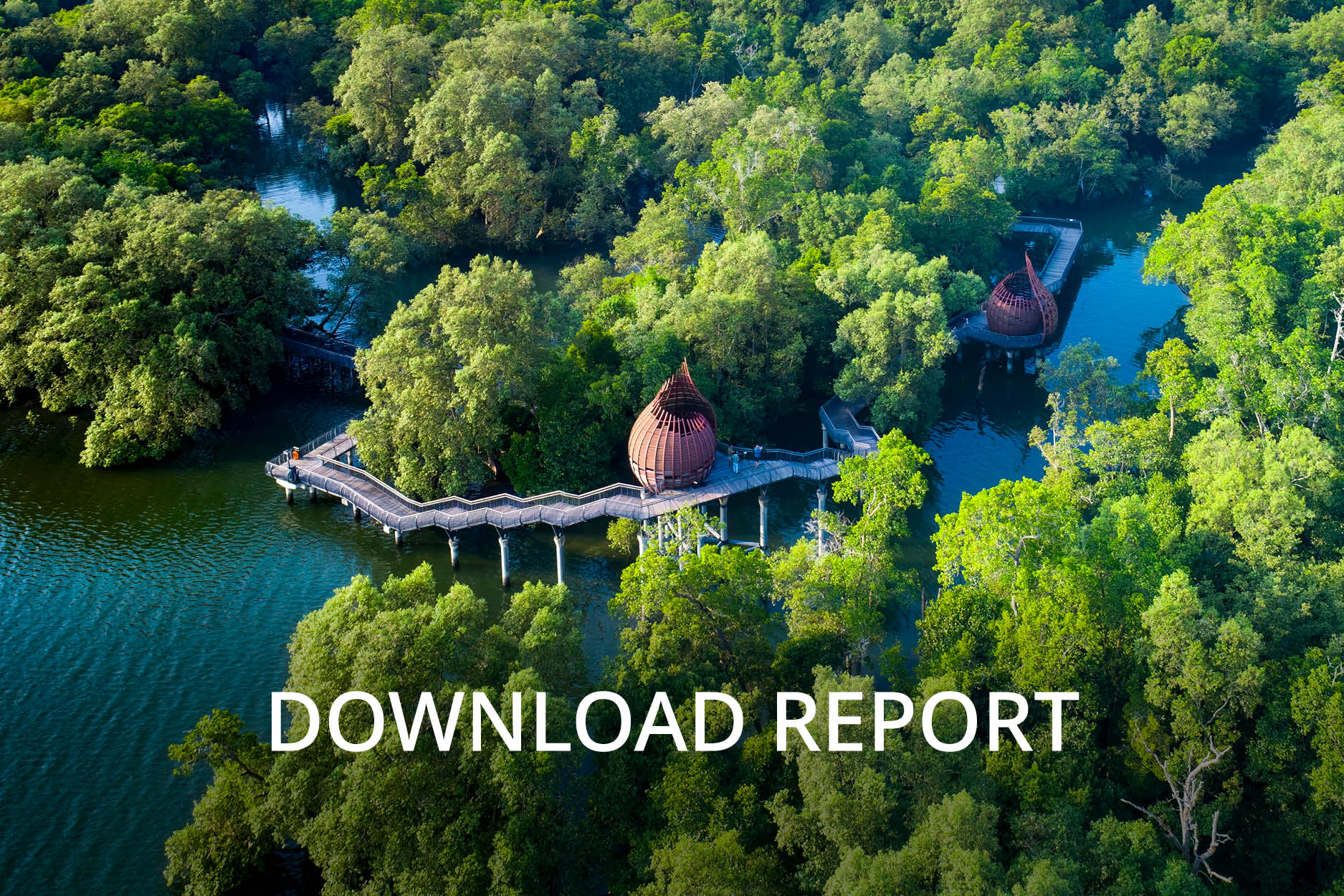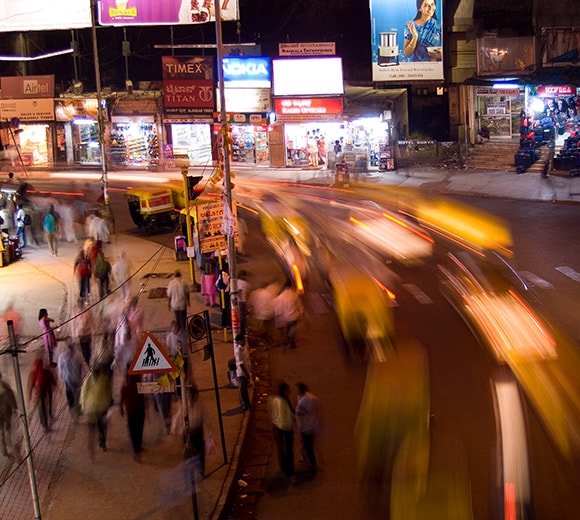Is it all about the money? 7 things we learned from COP29
Is it all about the money? 7 things we learned from COP29
COP29 in Azerbaijan was dubbed the “finance COP”. Here are our seven takeaways from this year’s event.

This year’s foremost climate change conference, the United Nations Climate Change Conference, or COP29, kicked off in Baku, Azerbaijan, with a goal to raise the ambition, finance and action to address the worsening climate crisis.
Over 65,000 people across public, private, philanthropic and people sectors joined the conference to tackle topics ranging from advancing global climate action and transition financing, to climate adaptation, the just energy transition and improving the integrity and credibility of carbon markets.
The headline deal, agreed after the conference officially ended, was that rich nations would commit to providing developing ones US$300 billion (S$404 billion) annually until 2035 to help them tackle the climate crisis. While this sum was triple the previous US$100 billion target, delegates from developing economies criticised it for falling woefully short of the estimated annual US$1.3 trillion of climate financing required to bolster climate resilience and support sustainable development in vulnerable nations.
Transforming the current global economy to a net zero economy will demand unprecedented investment and more flexible financing options. It will cost an estimated US$9.2 trillion (S$12.4 trillion) of annual average spending on physical assets alone such as energy and land-use systems. Virtually every sector will need to transform, from food and agriculture to the built environment, materials and industrials.
Here are our key takeaways.
1. Blended finance gets a boost in Southeast Asia
According to the Asian Development Bank, developing markets across the region will need US$1.7 trillion (S$2.3 trillion) annually in infrastructure investments running up to 2030 to retain robust economic growth while responding to climate change. Concessional financing, which is below market rate finance to accelerate sustainable development objectives, will be key in funding the huge required investments in infrastructure.
Such ‘catalytic capital’, traditionally derived from public or philanthropic sources, help to derisk climate projects, particularly in their early stages of development. They have a critical role in crowding in, or blending, private sector financing – pegged to commercially-oriented rates – needed at the later stages of project development. Such public-private-philanthropic financing partnerships are hence known as blended finance mechanisms.
The opening days of COP29 saw an important announcement of progress for blended finance in Asia, driven by the Financing Asia’s Transition Partnership (FAST-P), which was first announced at COP28 by the Monetary Authority of Singapore (MAS). This initiative to mobilise US$5 billion (S$6.7 billion) in capital for decarbonisation in Asia focuses on three key pillars where large amounts of capital is critically needed: accelerating the energy transition; improving the bankability of green and sustainable infrastructure; and providing debt financing to decarbonise hard-to-abate sectors.
It was announced that the Green Investments partnership, the second pillar under FAST-P, will aim to deploy US$1 billion (S$1.3 billion) in blended finance starting in 2025. The Partnership will be managed by Pentagreen Capital, the sustainable infrastructure debt financing company established by Temasek and HSBC.
The Singapore government also announced it will contribute up to US$500 million (S$673 million) of concessional capital to support FAST-P.
Addressing the bankability challenges that sustainable infrastructure projects in Asia face is key, explains Connie Chan, Head of Financial Services at Temasek, who spoke on a panel titled “Maximising the Multiplier on Catalytic Capital” at this year’s COP:
“In emerging markets, after a project gets through the project development equity phase, some may require concessional capital to get them to a stage where they're fully bankable. What is very encouraging and impactful about FAST-P is that the Singapore government is taking that leadership role to catalyse other concessional capital. That will in turn mobilise commercial capital as well.”

[Left to right] Cindy Levy, Senior Partner, London, McKinsey & Company; Connie Chan, Head, Financial Services, Temasek; Mason Wallick, Managing Director and CEO, Clime Capital speaking at COP29
By bridging the risk-reward disconnect through crowding in commercial capital and other sources of finance and bringing Asia’s green infrastructure projects to fruition, FAST-P is a strategic platform that brings together like-minded partners to unlock capital flow for projects that need it most.

Connie Chan speaking on a panel about scaling blended finance globally at the Business, Investment, and Philanthropy Climate Platform at COP29
2. Building on past successes help galvanise the deployment of more blended finance
As the use of blended finance scales up and more successful examples emerge, this will encourage more capital – both concessional and commercial – to be deployed into the region.
This year’s COP heralded an opportunity to discuss such success stories. Among them is Clime Capital’s South East Asia Clean Energy Fund (SEACEF), one of the region’s pioneering blended investment funds that provide early-stage high-risk capital to support businesses accelerating the region’s transition. This includes renewable energy generation, energy efficiency, electric mobility, and electrical grid businesses.
SEACEF I, Clime Capital’s inaugural fund launched in 2020, made 12 investments over two years, raising more than 27 times the capital provided by the fund – a significant achievement compared to the global industry average of US$4 of commercial capital leveraged for every US$1 of concessional capital, as reported by Convergence. Spotlighting success stories such as this will buoy confidence and build momentum for blended finance.
3. Getting to sustainable solutions demands systems-level change
Bringing sustainable solutions to scale demands a shift from project-specific financing to a systems-level approach, particularly in emerging markets. On the panel, Chan noted, “It can be challenging to find and amalgamate partners to make financing happen.”
To address these challenges, commercial and concessional capital providers will need to redesign finance mechanisms to mitigate bankability issues and spur green infrastructure financing. However, catalysing systems-level change requires more than funding – it hinges on forming strategic partnerships, building capabilities and deploying capital across different growth stages.
4. An opportunity for private sector actors to lead the way in climate finance
The private sector can play a pivotal role in scaling systems-level solutions. In September 2024, Temasek launched the Climate Change Concessional Capital Allocation (CCCA), setting aside US$100 million to provide patient, flexible, and favourable financing for high-impact climate projects. By doing so, it hopes to mobilise other forms of capital across the broader ecosystem.
The CCCA represents a novel way of advancing Temasek’s deployment of philanthropic capital, going beyond conventional grant-making, and a deepened commitment towards the climate agenda by catalysing solutions that address critical gaps in achieving net zero goals.
5. The road towards higher integrity carbon markets
Arriving at a consensus for the standards governing the development of carbon markets was also a key priority at this year’s COP. After all, high quality carbon credits are a key tool in the widely established “mitigation hierarchy” approach that companies use to prioritise how they reduce emissions, particularly in the short and medium term where it may not be immediately possible to avoid or reduce carbon-intensive activities.
After close to a decade of negotiations, negotiators finally reached an agreement in Baku on the standards for the creation of carbon credits under Article 6.4 of the Paris Agreement. COP29 organisers said the move signalled an important next step in ensuring the international carbon market is high integrity and that emissions reductions and removals are real, additional, verified and measurable.
Panels at this year’s event provided further food for thought. At a panel titled “Carbon Markets: The Need for Integrity" hosted by the International Organization of Securities Commissions (IOSCO), participants highlighted key factors that can help instill greater confidence in carbon markets. These include guidance from regulators to help markets build depth and liquidity to scale; improved harmonisation of standards and ratings verification to help foster confidence among investors; and clear signals from corporate stakeholders to provide greater clarity on demand.
New related bilateral agreements between countries were also announced in Baku. Singapore and Zambia signed a Memorandum of Understanding to trade carbon credits aligned with Article 6.
6. Scaling technologies can accelerate the green transition
As green technologies advance, the cost gap between clean and traditional fossil fuel options is closing. Increasingly, green solutions are becoming more affordable, shifting from products and services that demand 'green premiums' to ones that come with 'green discounts' that make them cheaper than their fossil-fuel counterparts. Examples include distributed solar photovoltaics in Indonesia, and two-wheeled electric vehicles in India.
That being said, the green discount is not universal across all industries. Emerging technologies like green steel or sustainable aviation fuel still require substantial upfront investments and risk-sharing mechanisms to reach cost parity with traditional alternatives.
Temasek’s Steve Howard, Vice Chairman, Sustainability, joined a roundtable hosted by the International Forum of Sovereign Wealth Funds (IFSWF) at COP29. At the session, he emphasised that rapidly scalable clean energy technologies now present increasingly favourable economics. Enabling policies and improved access to finance – including innovative solutions such as blended finance – can mobilise substantial investment for transformative impact.
.jpg)
(From the right) Dr Steve Howard, Vice Chairman, Sustainability, Temasek, speaking at COP29
7. AI is a key amplifier in the race for new green technologies
Panellists at COP29 offered more grounds for optimism around the adoption of green technologies. Cosmos Innovation Co-Founder & CEO, Vijay Chandrasekhar, explained the potential impact of his company’s proprietary AI platform, Mobius, which drives breakthroughs in perovskite/silicon solar cell development. While factories are still in development, these advanced solar cells - optimised through AI to combine materials and processes efficiently - could increase energy conversion efficiency and help the technology play an even bigger role in decarbonising industry.

Franziska Zimmermann, Director, Sustainability and Climate Change Strategy, Temasek [leftmost] moderating the ‘Affordable Energy Transition in Emerging Asia’ panel at COP29
COP29 also hosted the awards ceremony of the AI for Good Global Summit competitions. From using AI models to help optimise energy use in industries, to AI tools that analyse large datasets and better manage natural resources, these scalable innovations showed how AI can help accelerate climate action.
New business models and improved scalability of emerging clean technologies can further reduce costs and change the economics of the game.
The road to COP30
COP29 served up its fair share of insights and milestones, from blended finance initiatives and carbon market agreements to national commitments to phase out fossil fuels. The value of bringing together diverse players from the public and private sector, across industries and geographies should not be underestimated.
The focus must now shift from alignment to action. Ahead of COP30 in Belem, Brazil next year, countries must finalise new Nationally Determined Contributions (NDCs) – including financing and investment plans to deliver climate action at scale.
COP30 is also expected to focus on transforming food systems to mitigate climate change and enhance resilience, leading it to be dubbed the “Food COP.” Building on momentum from previous conferences, discussions will likely centre on sustainable agricultural practices, reducing food loss and waste, promoting climate-resilient crops, and integrating food systems into national climate plans. These efforts will complement broader themes such as protecting critical ecosystems, advancing sustainable development, and ensuring equitable climate financing, ultimately driving actionable progress towards the goals of the Paris Agreement.


